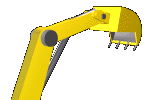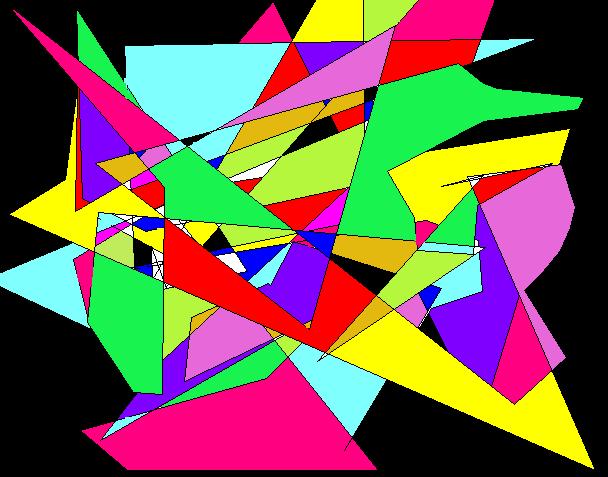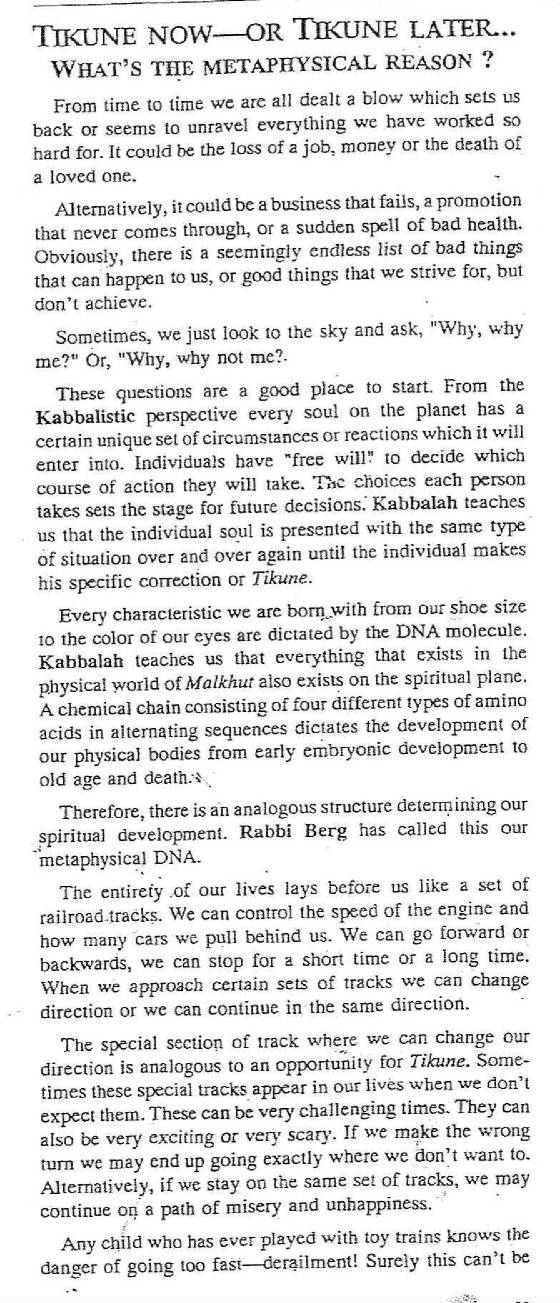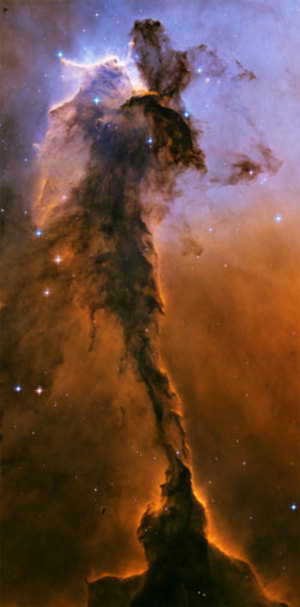|
Web sites used to have colorful backgrounds, and each web page was
designed to be about the size of the computer monitor. This site pre-dated blogs. Believe it or not there was a time when
there was no Internet!
I even recall being brought to the computer lab at Queens College
(sometime in the mid 80's) and being shown this computer program called gopher. This computer program hooked up with other
computers in different libraries throughout the country. This program was used to find books that could not be found in Queens
College. This system was actually a pre-cursor to the modern day Internet!
The link above will take you to a true archive. It has the kind of style that was often used in "homemade"
websites of its day. This site may actually have been one of the last websites created before the tragic incident which has
now simply has become known as 9/11.
I will place the link in another one of my posts, however it is interesting to note, that the library
of congress actually tried to create an archive of sites which discussed 9/11. I just can not fathom how they may have missed
the above site.
For those who do not like clicking links, just try the following url: <a href="http://catchatiger.tripod.com">http://catchatiger.tripod.com</a>
PS: I did submit the catchatiger site to the library of congress, so lets see what happens.
The Secret (A DVD)
The Secret seems so simple and yet at the same time it is so compelling in its simplicity and in its truth.
Say Bye-Bye To Tripod! |

|
Say Hello To Our New Home! |

The Secret (continued- from <a href=“http://thewriterscafe.org”>The Writers
Cafe.org</a>
Right from the beginning of the DVD “The Secret” we are informed that the
information contained within “the secret” has been available for thousands of years. The Secret also shares with
us many notables throughout time (such as Albert Einstein, Abraham Lincoln et al) have know about the secret throughout the ages.
“The Secret “ the DVD as released in 2006 consists of two parts. The first part is a flashy Hollywood style
piece that is so well done that it grabs you as a commercial or a coming attraction for a full length film that is not yet
released. The second part of the “The Secret” plays like a full length infomercial and part of you keeps
wondering, when is this ever going to end? The part of you that believes the content of the content of the DVD makes
you wonder if you should be looking for a pen and a piece of paper, so that you can write down the 800 number when it appears
on the screen. Of course you will need to get your credit card ready so that you can buy (whatever it is that they are about
to sell you).
Unlike an infomercial however, The Secret, delivers a powerful message. I must state here that the particular version I
viewed made me think that it was being overly redundant and that it kept saying the same thing over and over again.
My readers by now might be wondering why have I not yet provided some sort of link to the site where one can either actually
obtain their copy of The Secret, or at least read what others are saying about The Secret. The simple answer to this is that
I I have already gone to the official site, and found that there were significant links to commentary to content which I feel
may be unsuitable for my targeted readership.
This review is going to be completed on one of my google blogs because experience has shown me that my writing on this
Tripod/Lycos hosted free web host do not readily get picked up by the search engines:
I think a good google blog to continue this would be:
The Beis of Creation
I was able to give over some of the ideas from my postings on Chukas, Balak and the following story (use this link) at last
night's fabrengen.
| Stained Glass |

|
| BY Dinah Sanders |
Parashat Balak, the plague which had killed 24,000
Parashas Balak, the plague which had killed 24,000 until it was halted by the
actions of one zealot, Pinchas
By Aharon Moshe (Stephen C.) Sanders July 10. 2008
There are many reasons that I choose to write. One reason is that I feel it is my
duty, on another level I feel the need to express my thoughts. Perhaps most important for me personally is that writing helps
me understand things better.
As a Bal Tshuva, or BT (some who came to be observant of Jewish halacha at some point other than birth), I feel that
I have the opportunity to learn so much from the people in the frum community in which I live. However since so many people
are so much more learned then I, there is relatively little opportunity for me to actually teach someone Torah ideas which
I am attempting to master. One of the ways I have found to actually master new information is to express it either verbally
or in writing.
My earliest formal learning in shuls about Torah ideas, and principles took place in an orthodox shul in Queens NY some
15 or so years ago, over a period of approximately three years, primarily on shabbos . I had learned a different way of understanding
Torah was to look at the cause and effect relationships, rather than punishment and reward. By seeing things on a cause and
effect relationship, I could learn great lessons from our holy Torah and attempt to apply them to the way our world operates
today.
I have learned that things emanate from Shamayim in a group of five related things called a Partzuf. Therefore my current
goal is to develop an understanding of Parashas Balak from the point of view of the events which lead up to the plague which
had killed 24,000 until it was halted by the actions of one zealot, Pinchas.
Take A Census
Perhaps the root cause of the event where 24,000 perished in a plague can be found
within the following Parashios:
Parashas Nasso leads off with Hashem telling Moshe to take a census. Then we have Hashem issuing directives designed
to purify the camp. Tzarass, ritual contamination (tumah) caused by contact with dead human bodies and theft are dealt with.
Our holy Torah provides a miraculous way of confirming the innocence or guilt of suspected adulterous behavior on the part
of a man’s wife. After the explanation of how the Sotah waters are administered, the Torah explains how someone can
become a Nazarite and take on a level of kedusha or holiness whereby one can distance oneself from various worldly temptations.
By the end of the Parashas, Moshe enters the tabernacle and Moshe hears the Voice [of Hashem] speaking from above the Ark
cover, upon the Ark of the Testimony, between the two Cherubim. Parashas Nasso concludes with the nation of Israel being at
a highly purified state. If one were to simply pause here and reflect, it would seem that the nation of Israel would surely
be headed for only great things.
From Holy to Defiled
The situation that we are often faced with is that we only see one
small segment of a long chain of events that lead us to where we are today.
Often we are not satisfied with our current status or lot in life, but are often
clueless as to which way to turn to remedy the situation. By refusing too look at the big picture, we are simply
cutting ourselves off from many of the potential remedies that are available to help us overcome the current obstacle. By
having access to the wisdom of our holy Torah, we can attempt to grasp the situations that our ancestors were faced with and
try to learn from the mistakes, or errors which they committed.
The important thing is to maintain a humble attitude and realize that today as a people living our lives, that we are far
from the elevated status of our ancestors. If we could learn even small little tidbits from our holy Torah about how to act
and react with our family, business associates and friends, then we could as individuals and a people could all be capable
of great things beyond our wildest imagination.
Parashas Beha’aloscha through Parashas Balak:
I will try to take my own advice regarding remaining humble and will not even attempt
to summarize these five Parashios within the hoped for time frame of publishing this web page prior to this coming Shabbos.
The pages containing both Hebrew and English, along with explanations take up 100 pages in The Stone Chumash. At best I will
attempt to hit the major points which connect one Parashas with another from the point of view of attempting to show the
cause and effect relationships.
What Are Our Leaders Doing?
In yesterday’s Daf we were learning that by the time we as a leader have caused someone to sin; who has in turn also
caused someone else to sin, that is now too late to do tshuva for that act. We learned that even a profit such as Elisha was
punished for pushing away one of his students with rebuke using both hands. Instead we are taught that with our rebuke we
can indeed push someone with one hand (as mussar) but that we need to also bring them close to Hashem with our other hand.
These concepts are as true for parents as they are for our teachers of Torah and leaders.
BeHa’aloscha :
While we learn that it may have only been a small minority at first
that complained regarding lack of meat and were dissatisfied with manna, that they managed exert a negative influence on the
rest of the people. R. Shimon sites leadership who were held accountable for not seeking to soothe the complainers an encouraging
them to be faithful. The complaining had effected Moshe so negatively that he in turn complained to Hashem that he could not
carry the entire nation alone, Hashem then instructed Moshe to appoint seventy men from the elders of Israel. Hashem was going
to increase Moshe’s spirit to place it on the seventy elders.
The Parasha had begun with Hashem telling Moshe to speak to Aharon regarding
lighting the seven arm Menorah. Now Hashem was explaining to Moshe that he was going to use Moshe’s spirit and
increase it and place it on seventy new leaders. Our Torah is providing some valuable insight into the nature
of crowds and their tendencies to complain as well as the importance of leaders and their role in handling issues as they
arise.
Be Careful What You Ask For:
The lesson of Hashem’s providing meat for the masses to eat
is so obvious as it almost requires no commentary.
However Moshe, our teacher seemed to have had gotten caught up in the mathematics of the matter and was questioning Hashem
how it was possible to provide meat for the 600,000 with available supplies of sheep and cattle. Indeed Moshe had even considered
a parve alternative, how about fish?
Was there enough fish in the sea to satisfy the appetites of the 600,000 for a month? It seems that Moshe’s
dialogue with Hashem was a highlight pointing out the nature of man’s desire. It seemed difficult to turn off the
requests and complaints of the people once they started coming up. Hashem’s answer to the constant complaining
was even simpler , give them so much meat that they choke on it! If one reads into the words of Hashem as delivered
to Moshe in response to the peoples complaints it seems that the complaints about the food, did not get to Hashem or provoke
Hashem’s anger nearly as much as the statement that they would have been better off in Egypt.
Maybe the best response to the complaint and request for meat should have simply been
no!
Had there already been more leaders in place at the time this answer perhaps could
have been given. Indeed as parents we sometimes simply need to realize that children will often make unreasonable demands
and requests. Even if we want our children to be happy simply giving them whatever they ask for is rarely the best option.
Finally it does not seem right to entirely leave the matter of the complaints about the food without at least touching
on an explanation that I had read or heard but can not site the source. The explanation that was given revolved around the
idea that the manna was supposed to take on any taste that was desired, however it was desire itself was the
thing that our ancestors were crying out for in the wilderness. The explanation was that the meat itself created a desire
for other things of a more pleasure centered nature.
The Words of our Holy Torah:
“Who will feed us meat? We remember the fish that we ate in Egypt free of charge;
the cucumbers, melons, leeks onions and garlic. But now , our life is parched, there is nothing; we have nothing to anticipate
but the manna!” (Bamidbar 11:4-6 The Stone Edition The Chumash pg 789, Mesorah Publications, 1994)
Moshe heard the weeping of the families by their tents and Hashem’s anger was aroused. Our sages point out that the
use of the word family alludes to a deeper reason for their complaints. The people were frustrated by the Torah laws of family
purity and permissible relationships.
Finally Our Leaders Themselves Fall
When Miriam spoke Lashon Horah against Moshe our teacher, and Aharon,
the Cohen HaGodol listened, it was clear that the nation of Israel had be become thoroughly defiled.
Could the merit of Moshe, our teacher, alone be enough to avert the upcoming tragedy
which awaited our ancestors?
The Complainers
By Aharon Moshe Sanders, July 14, 2008
In Parsha Beha’aloscha, Bamidbar 11:1-3
[ When the Ark would go forth Moshe said “ Arise Hashem and may your enemies be scattered and let those that hate
you flee... ] It is after these words our Torah teaches us that people took to complaining. Hashem heard these complaints
and his anger flared against Israel and people were killed by the fire of Hashem at the edge (Beis Kuf Tzadi
Hey). Bamidbar 11:1
The Hebrew word used in our Torah is; Bekitze, which has been translated to mean edge. The commentary in The Stone Chumash
explains that the fire of Hashem killed many people. These people could have been leaders, or they could have been the mixed
multitude according to different commentators.
A minimal amount of words has many being killed. Additonally there is little
explanation other then that people cried out to Moshe, and Moshe in turn prayed to Hashem, and the fire died down. The place
was named Taberah because the fire of Hashem burned against Israel at the edge of the camp.
In Parshas Balak, Bamidbar 22:36-41 we have the word edge used quite a few times. As a matter
of fact our Torah begins to get very specific in geographic terms regarding where they met “ the city of Moab, on
the border of Armon, at the very edge (Beis Kuf Tzadi Hey- Bekitze) of the boundary. The same hebrew word describing
geographically how Hashems anger flared and took out (killed) perhaps thousands of people in Parsha Beha”aloscha, in
a town named Taberah specifically for the event, is now being used to describe where Balak and Balaam meet. ( Bamidbar 22:36).
Then we have Balaam going with Balak to a town called Kiryas Chutzos.
In case we missed this definite connection, our Torah uses the word the same hebrew word for edge without the Beis prefix,
(Kuf Tzadi Hey) kitze which is also translated as edge.
“ Balak took Balaam and brought him up to the heights of Baal, from there he saw the edge of
the people. “ (Stone Chumash 22:41 pg 863, Mesorah Publication 1994, Bklyn NY).
|






